Behold our FTC disclosure masterpiece here. The following article was last updated on Dec 15, 2021 ...
Lose The Tool: Chain Alignment By Sight
Some maintenance tasks in modern motorcycling are so spaced out mileage wise that our knowledge of their steps can go rusty. In this case, it's the chain alignment on my daily rider's double-sided swing arm. Because drive chain adjustment is rarely necessary, the effects of turning one bolt versus another can be easily forgotten, so I've elected to document the process.
“Backing out the alignment bolt on the right side of the swing arm moves the teeth of the rear sprocket to the right within the chain links.”
For those new to wrenching, motorcycle chains stretch slowly over time and must be adjusted accordingly. The rear axle should then be tuned so that the sprocket's teeth are aligned center within each chain link. Where some riders may blindly trust alignment markings or a third party tool, others (myself included) will align the chain by sight. This technique is far more efficient and effective once we learn to equalize the alignment bolts, insuring the rear wheel's horizontal axis is properly positioned.
On my Bandit 1200, I "experimentally" trusted the alignment markings along its swing arm. This is a proven mistake. The outcome is a wheel that's off center, with a chain that's too tight to boot. Below are images of the very same nuts, bolts and markings after correcting the alignment. Comparing the left and right notch positions, the difference is obvious.
Additionally and as mentioned above, there are tools on the market for motorcycle chain alignment but they tend to be more trouble than they're worth. Sure, they're useful while the adjustment is being made but once it comes time to torque things back to spec, accuracy becomes questionable. Enter the vicious cycle of loosen, adjust, tighten, check, repeat until we've earned another gray hair.
Simplifying The Sprocket Alignment Procedure
Rolling the rear wheel, sometimes swiftly and other times gently, while checking that each tooth has some amount of space around it is a better way to insure proper chain/sprocket alignment. Another well known method is to measure from both sides of the center axle to an equidistant point near the motor before confirming both figures are identical. Our preference for the first option stems from the final drive employing so many moving parts.
This approach compensates for any wildcard behaviors that might find their way into the mix ...
There's reason for thinking that any shift, to the right or left, would be the correct choice when tuning your rear wheel's horizontal axis but actions speak louder than words. Noting the sprocket's teeth were resting left of my chain, I tightened in the right side alignment bolt in hopes that it would bring things center. Instead, my wheel became further misaligned and the more said adjustment was tweaked, the farther back I had to go to resolve matters.
Drive Chain And Rear Sprocket Trigonometry
Pictured above is my misaligned sprocket (left) and corrected alignment (right). Observe the visible space on either side of the sprocket's teeth. For double-sided swing arms, the gist of all things chain alignment can be summed in a simple phrase ....
“Facing the back of the bike, backing out the alignment bolt on the right side of the swing arm moves the teeth of the rear sprocket to the right within the chain links.”
Backtracking my steps to think about why the above statement would produce successful alignment gave me both answers and an awkward facial tick. One thing I learned is that my motorcycle chain is anchored more sturdily at the front sprocket. Over testing (exaggerating my chain's misalignment) confirmed the process reliable, now published here for future reference.
That stated, remember to take notes whenever executing a rare but recurring motorcycle maintenance task! More importantly, post your findings to this site by way of an article! Even if dancing the "two steps forward, one step back" tango, your properly maintained motorcycle and newfound knowledge will serve as reward.
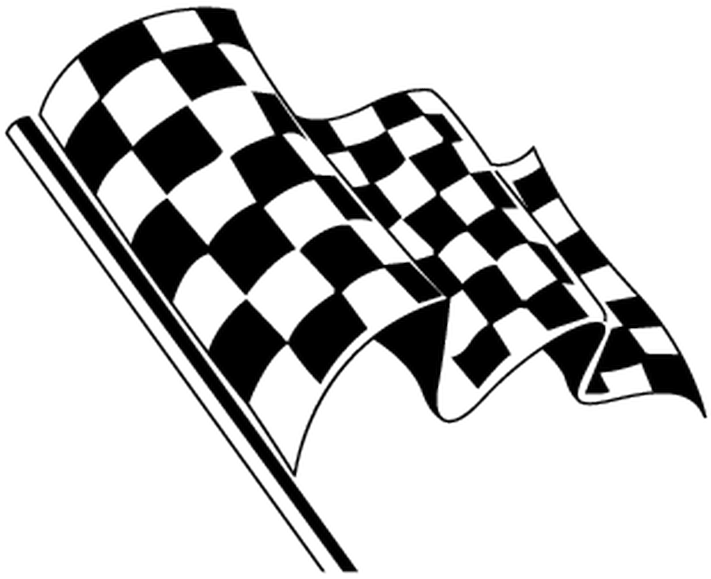
What Technique Do You Use When Adjusting Your Motorcycle Chain?
We mention more than one approach above. How do you go about motorcycle chain alignment? How did you arrive at this method and why? Your input is invited. Leave a comment!
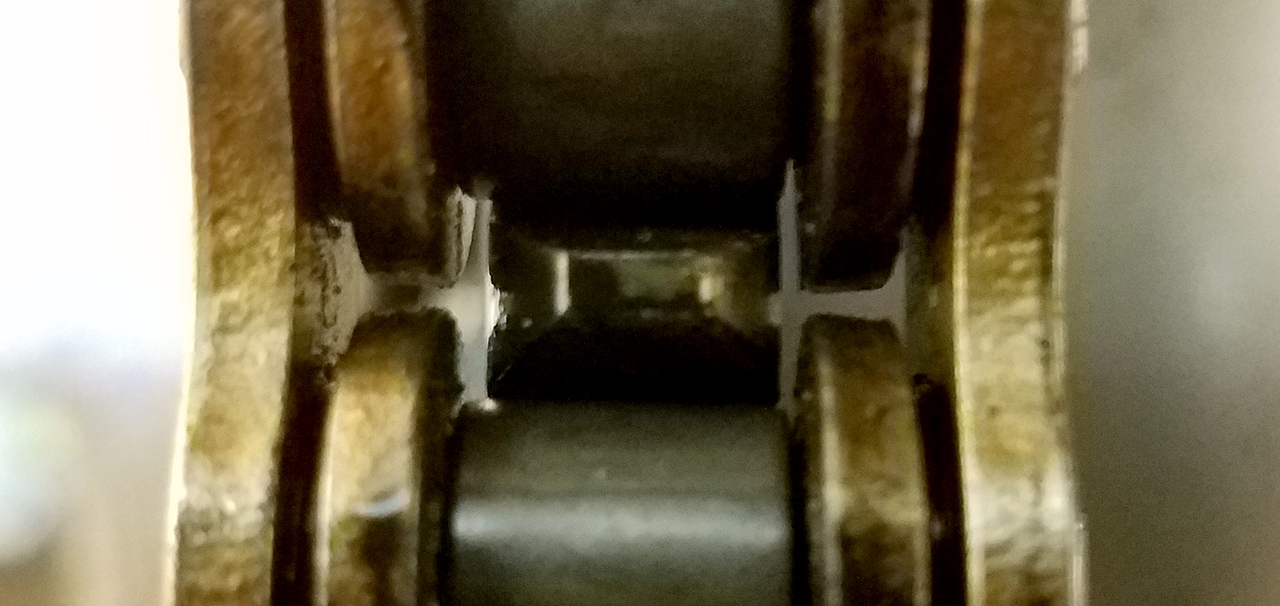
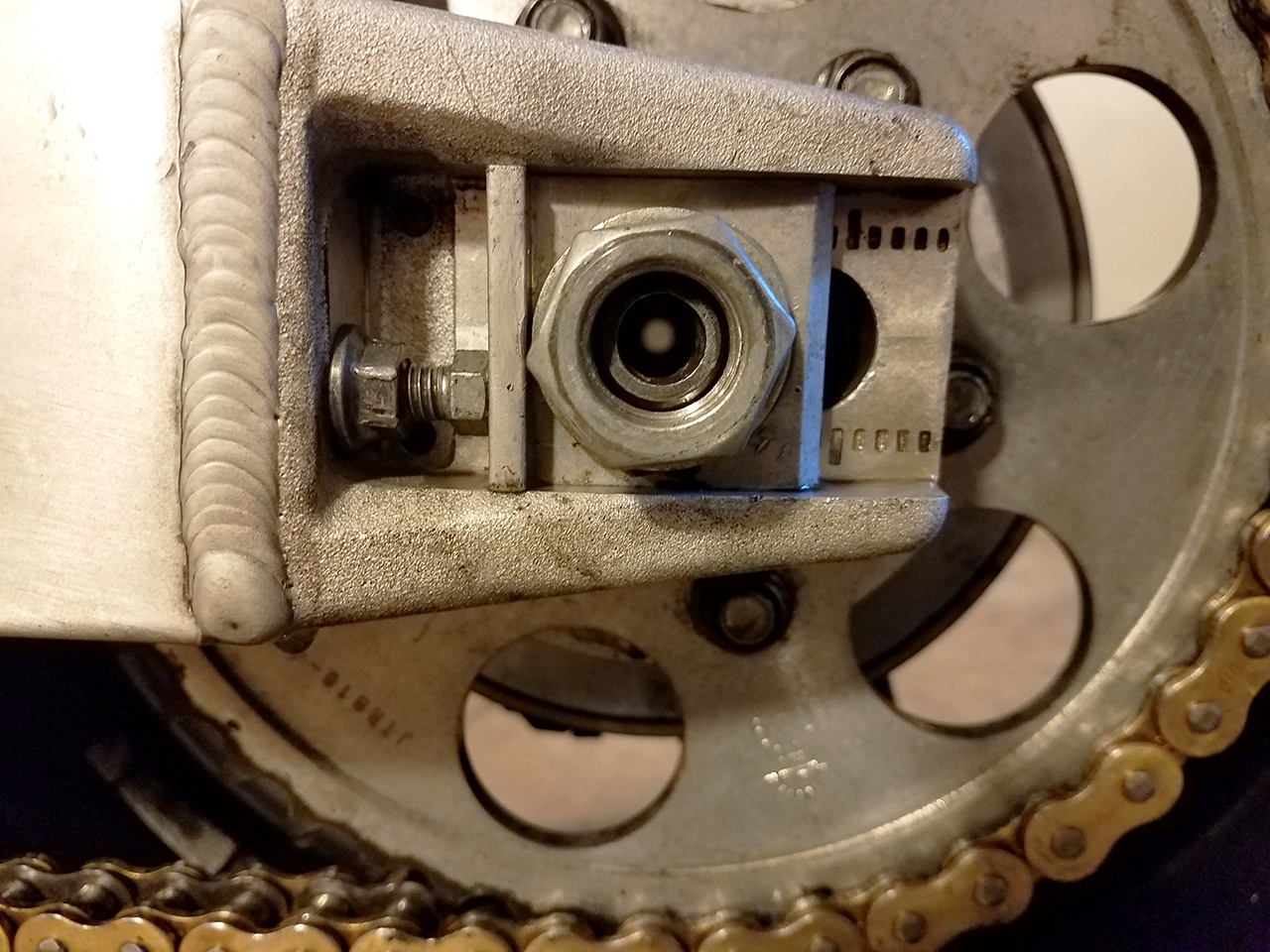
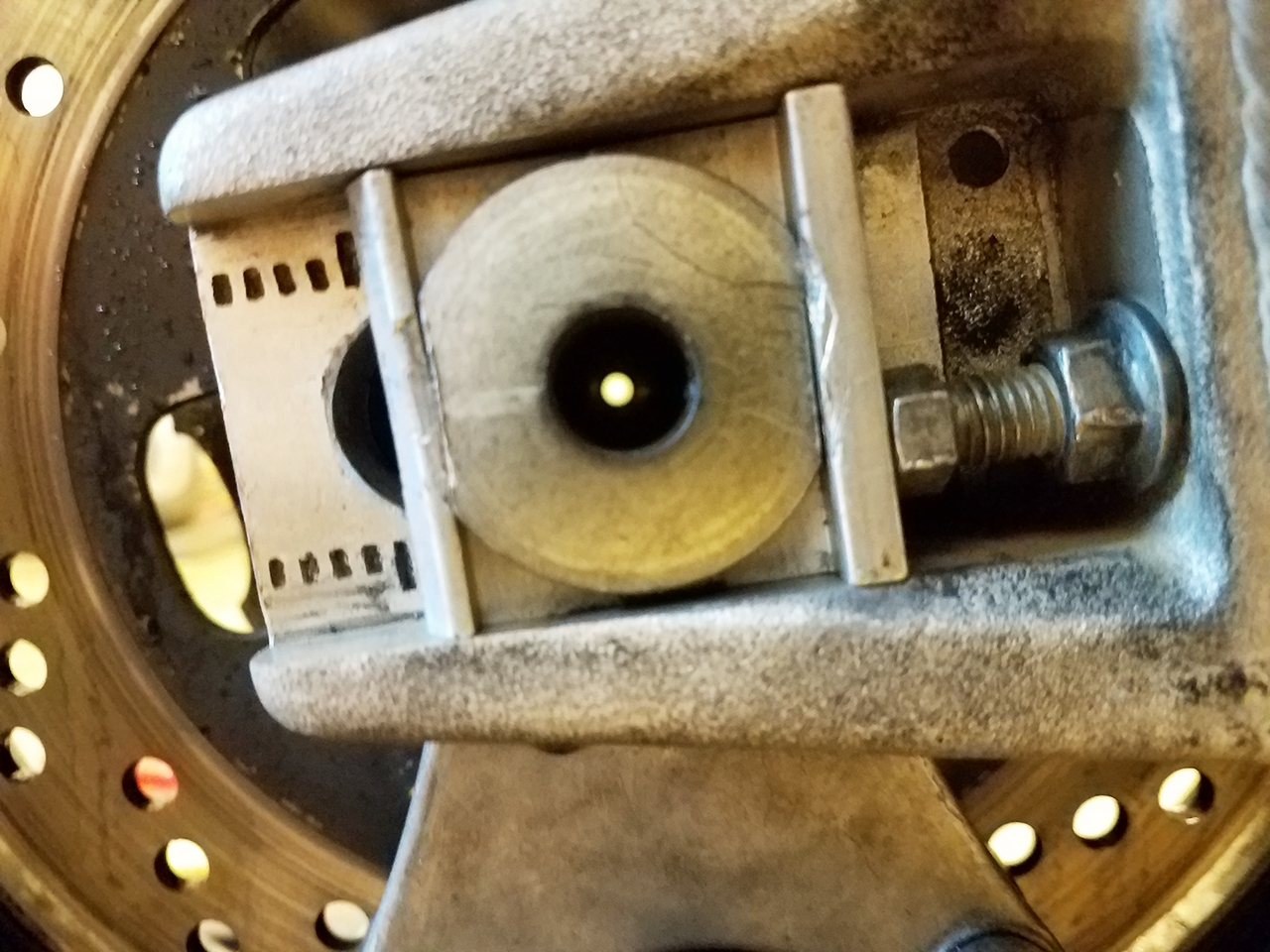
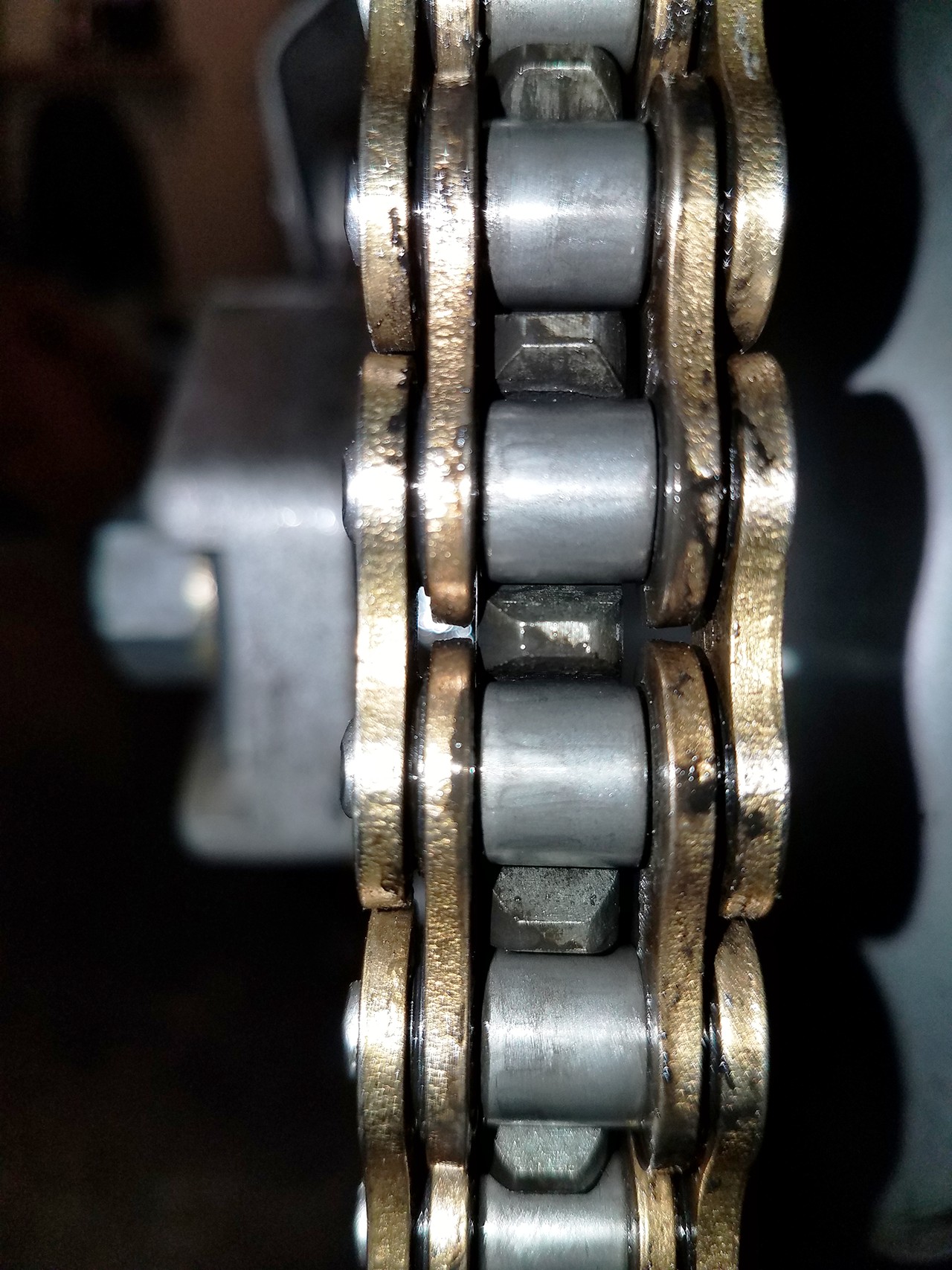
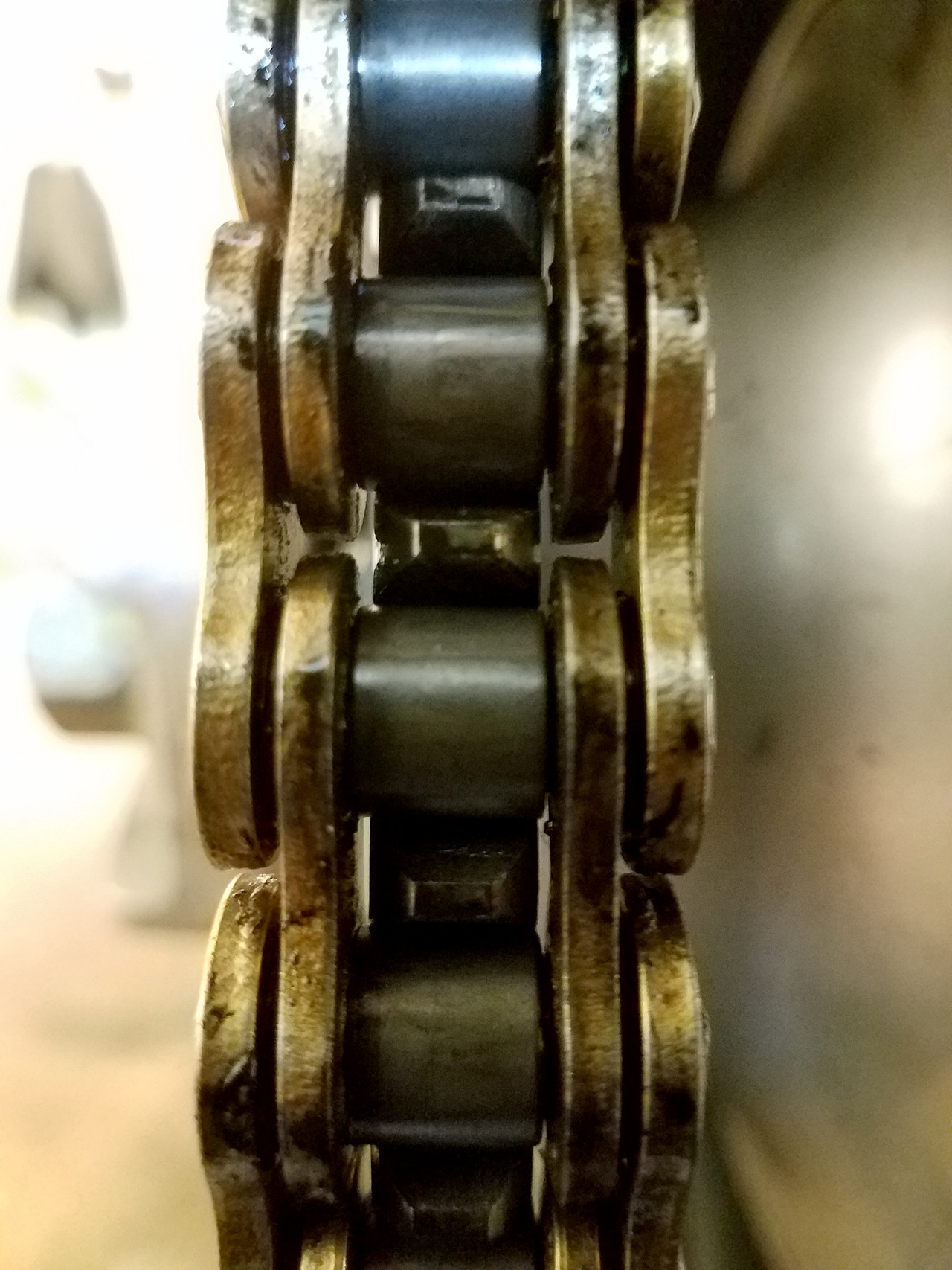
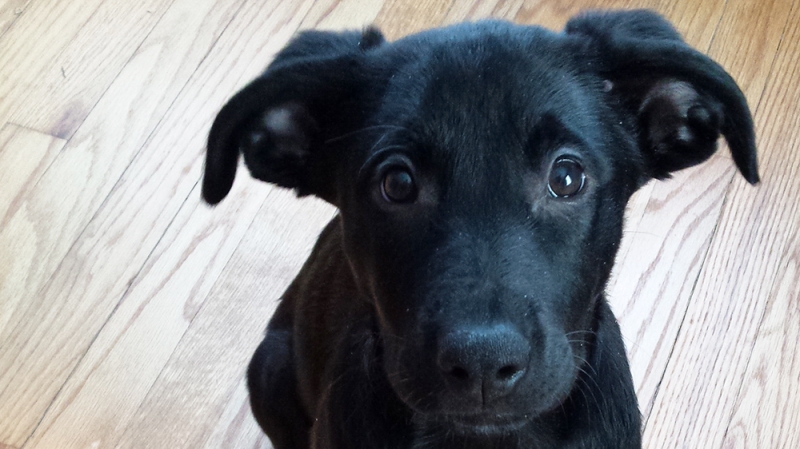

Comments
Simple and extremely sensible!
This will help all who read it :-)
I noticed some shiny wear on one side of my chain and rear sprocket. The marks for alignment are hard to see on this bike. According to the marks the alignment should have been off (and it was) but I couldn't figure out which way to move it to fix the problem.
Like you, I would move it the way I thought it should go, but it would get worse. I kept going back and forth. So, I started looking at the teeth on the back sprocket to see if they were centered in the chain.
I found that if I turned the wheel backwards it would move the chain one way but spinning it forward would bring it back. Since I can't drive very fast backward, I just kept adjusting and spinning the wheel forward until the chain centered on the sprocket (just like in your pictures).
I used gun blue on the side of the sprocket were the shiny wear was and will check to see what it is doing after I ride it again. I was going to buy a chain alignment tool but why waste money. I might only use it once in a blue moon!
The physics of it can get pretty crazy.
When you look at a chain's alternate response to forward/backward wheel spin, one difference is a "draping" effect while it's being compressed. Neutral rolling the wheel forward will insure this, which is why I only ever roll it backward to check.
Free-rolling the wheel backward creates straight-line tension, making it easier to judge alignment.
I tried centering my sprockets centered on the chain. Some teeth ended up to the left when looking underneath. Is this normal?
Are your sprocket teeth all centered from the point it makes contact with the chain?
Crazy thing ... I got most teeth centered while spinning the wheel but the swingarm markings were almost 2 notches off!
@Rolando ...
"Some teeth ended up to the left when looking underneath. Is this normal?"
Yes, this is normal. Underneath the sprocket, the chain becomes loose, so the extra slack will have this effect. It's nothing to worry about, so long as the chain is properly adjusted (see your manual).
"Are your sprocket teeth all centered from the point it makes contact with the chain?"
They are for the most part. There's some minor deviation but not much. Basically, make sure your chain is clean and in usable condition first.
Is it dirty? Damaged? Are there any kinks?
What about the sprocket? Is it marred in any way? Shark toothed?
Once I confirm that the chain and sprocket are in proper working order, then and only then do I assume my adjustments will be technically correct.
If the post-adjustment setting seems "odd" afterward, it might be worth pulling an engine cover off to look at the FRONT sprocket and be sure it's not shark toothed.
@Robin Dean
Robin, I do not understand your comment:
"When you look at a chain's alternate response to forward/backward wheel spin, one difference is a "draping" effect while it's being compressed. Neutral rolling the wheel forward will insure this, which is why I only ever roll it backward to check.
Free-rolling the wheel backward creates straight-line tension, making it easier to judge alignment."
the chain's alternate response?
bacward wheel spin?
draping effect?
what is compressed?
straight line tension?
I haven't felt this dumb/uneducated in a very long time. Could you please share more?
1) Chain's Alternate Response - Put your bike on its center stand. Turn the rear wheel forward and watch the chain. Next, turn the wheel backward and again, watch the behavior of the chain.
2) Draping Effect - Turning the rear wheel forward, the chain goes slack up top because it's being pushed by the rear sprocket instead of pulled by the front. Spinning it backward eliminates that slack, i.e. "straight line tension".
Awesome info! Thanks heaps.
Been trying to figure out how to accurately align my chain/wheel without having to fork out money for a special tool. My bike is a GSX-S1000 and has only 4000km on the clock.
When I spin the back wheel either way (and with the chain tight), be it loose or just right, the links slowly alternate between both sides of the rear sprocket! Bugger I say. I thought it was too good to be true. When I spin the back wheel and look down the length of the chain I can see it edging from side to side. So I've ruled out run-out on the sprocket.
The chain is meticulously cleaned/lubed every 250km-500km. Most cars leave me for dead at the lights so the chain should still be in its infancy.
Another thing that probably should be considered is that the chain/rear wheel may be aligned when the bike is static. However, when a bike is on the move, the engine will shift slightly in its rubber mounts + the frame and swing arm will flex. These things won't only cause a horizontal misalignment but will also cause the chain to twist which will translate into a vertical misalignment on the sprockets.
This is all too hard for me. Gonna sell my GSX and get a shaft-drive!
Darren,
I think the initial effort to get things lined up (cold engine) is good enough. After that, a "set it and forget it" mindset should put you at ease, within reason. If you should check it after a ride and find that it's wrapped around the sprocket three times in a double-knot, well, that would be bad.
But using the above method to say "better than not having done so" is, in my mind, more consideration than most give.
(Says me, the guy who now rides a shaft drive LOL) but then my wife's Triumph STR is chain drive, so I'm not completely out of the woods on these matters. I just spin, align, check thrice, torque to spec, check tension, check alignment one last time and ... walk away in peace.